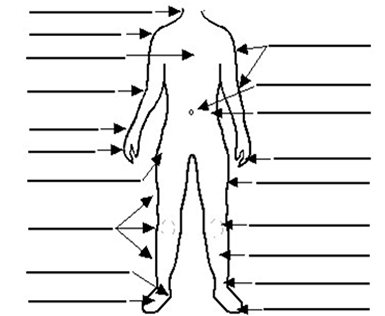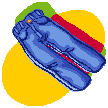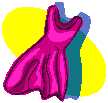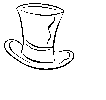
In Lesson 2 you will be introduced to new vocabulary for the parts of the body, clothing and buildings. The new terms will be used in the Nominative, Genitive and Accusative Cases.
Зараз! Right away! (Immediately, at once)
|
Іменники:Називний відмінок
|
Dialogue 15 provides the context for learning vocabulary related to parts of the body, clothing and important buildings. All of the words in the charts below appear in the Nominative (dictionary) form.
Частини Тілa
| |
|
|
| шия/neck |
| плече/shoulder |
рука/arm |
| груди*/chest |
|
| |
пупець/belly button |
| лікоть/elbow |
живіт/stomach |
| зап’ясток/wrist |
|
| рука/hand |
пальці**/fingers |
| |
стегно/thigh |
| стегно/hip |
|
| |
коліно/knee |
| нога/leg |
|
| |
литка/calf |
| п’ята/heel |
кісточка/ankle |
| нога/foot |
пальці**/toes |
| |
|
*usually appears in the plural form.
** singular - палець
| |
|
волосся*/hair |
| голова – head |
|
| |
|
 |
око/eye (очі/eyes) |
зуб/tooth (зуби/teeth) |
 |
 |
ніс/nose |
уста*/lips |
 |
 |
вухо/ear (вуха/ears) |
язик/tongue |
 |
* plural form. The word губи is also used for lips.
XV. Exercise 2.i
Review the parts of the body in Ukrainian by completing the exercise below.
1. |
2. |
3. |
4 |

|

|
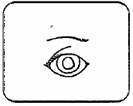
|
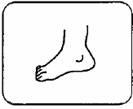
|
______________ |
______________ |
______________ |
______________
|
|
|
|
|
5. |
6. |
7. |
8. |
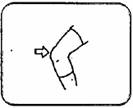
|
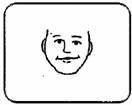
|

|
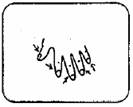
|
______________ |
______________ |
______________ |
______________
|
|
|
|
|
9. |
10. |
11. |
12. |
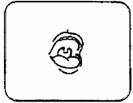
|
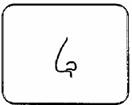
|
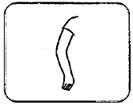
|
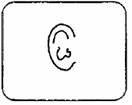
|
______________ |
______________ |
______________ |
______________
|
|
|
|
|
13. |
14. |
15. |
16. |

|
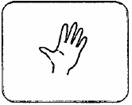
|
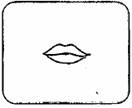
|
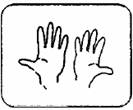
|
______________ |
______________ |
______________ |
______________
|
|
Іменники: Родовий відмінок
|
In Unit XV, the Genitive Case is used after the preposition до to indicate motion towards a particular place or location.
 |
У розмові ми чуємо: |
Діти, час іти до школи.
|
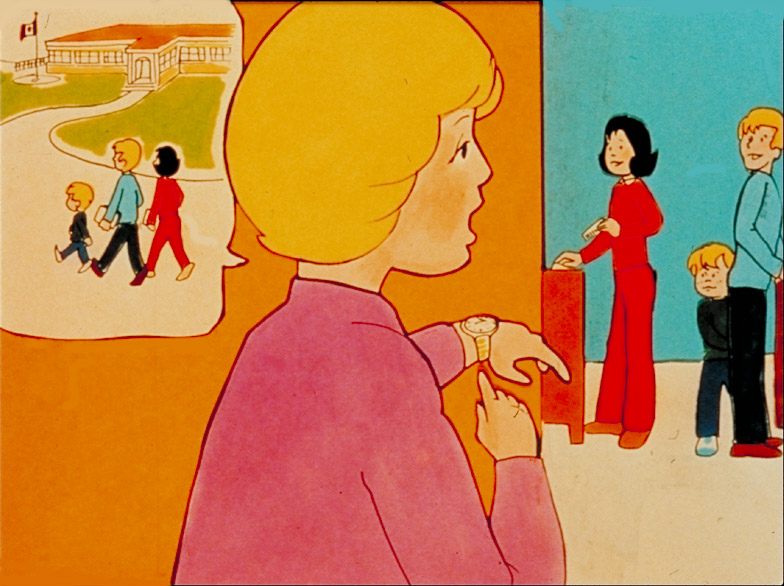 |
|
In the Genitive Case, the endings are as follows:
| Жіночий рід |
а --- и |
|
лазничка --- до лазнички
хата --- до хати
країна --- до країни |
| Жіночий рід: |
я --- і/ї
|
|
кухня --- до кухні
столиця --- до столиці
Наталія --- до Наталії
провінція --- до провінції |
|
| Середній рід |
о --- а |
|
місто --- до міста
Торонто --- до Торонта* |
* changed by diaspora speakers of Ukrainian, but not in Ukraine.
Чоловічий рід
Changes to masculine gender nouns are a bit more complicated in the Genitive Case, depending on whether the nouns are animate or inanimate. Masculine animate nouns (proper names and people) in the Genitive Case are changed in exactly the same way as masculine animate nouns in the Accusative Case.
| Consonant + a |
брат --- до брата
Іван ---до Івана |
| Soft ending --- я |
Василь --- до Василя
Андрій --- до Андрія |
Masculine inanimate nouns have two sets of endings.
| Consonant + a (also y for certain words) |
стіл --- до стола /до столу, до садочка /до садочку |
| Consonant + у |
банк --- до банку
ресторан --- до ресторану |
| Soft ending --- ю |
музей --- до музею |
In the next segment, you will be able to examine the second set of endings more closely, as you learn the Ukrainian names for structures (buildings).
When using the Genitive Case with the preposition до, there are two ways to ask questions, once again depending on whether we are asking about a living person or a non-living place/object:
Animate: До кого?
Inanimate: Куди?
XV. Exercise 2.ii
To review the use of Genitive case, complete the following exercise. You are only working with animate nouns in this exercise.
1. |
Даруся |
Хто пише до __________________________?
|
2. |
він |
А хто пише до __________________________?
|
3. |
пан Білан |
Я пишу до __________________________.
|
4. |
Наталка |
Ми пишемо до __________________________.
|
5. |
Я |
Вона не пише до __________________________.
|
6. |
Михась |
Вони пишуть до __________________________.
|
7. |
ти |
Чи він пише до __________________________?
|
8. |
Анна |
Ні, він пише до __________________________.
|
9. |
Давид |
Чи Оленка пише до __________________________?
|
10. |
вона |
Так, ми пишемо до __________________________.
|
Будинки

|

|

|

|
1. музей
( museum )
|
2. хата (дім)
( house , home )
|
3. банк
(bank)
|
4. кінотеатр *
(cinema)
|
|
|
|
|

|

|

|

|
5. бібліотека
( library )
|
6. ресторан
( restaurant )
|
7. школа
(school)
|
8. церква
(church)
|
|
|
|
|

|

|

|

|
9. крамниця
(any store)
|
10. лікарня **
(hospital)
|
11. пошта
(post office)
|
12. магазин
(a shop)
|
* a combination of two words - кіно (movie) + театр (theatre)
** also шпиталь
|
Let’s review what you already know about Case endings.
Називий відмінок: When a word is used in the Nominative Case as the subject of the sentence, the ending does not change.
Це моя школа. Де твоя школа?
Тут мій дім. А де твій дім?
Місцевий відмінок: When stating a location or place (with no movement), the Locative Case is used together with the preposition у/в.
Чи Леся тепер у школі? Так, вона у школі.
Хто грає в шахи в хаті? Хлопці грають у шахи в хаті.
Де мама й тато? Вони розмовляють у кухні.
Знахідний відмінок: When using a noun in a sentence as the direct object, or after the prepositions про, на, у/в, the Accusative Case is used.
Ви маєте гарну білу школу!
Я читаю про школу у журнал.
Я чекаю на Тамару в коридорі.
Чи ви граєте у футбол чи танцюєте в ансамблі*?
* Note: If you are a bit confused about the use of both the Accusative and Locative Cases with у/в, the key is to recognize whether motion is implied (playing a game or moving in some way - Accusative) or there is no motion (a stationary place - Locative).
Родовий відмінок: When using a noun as a possessive, to express a part of something or a quantity, or after the preposition до, the Genitive Case is used.
(You will learn more about the first two uses of this case in coming Units.)
Куди діти йдуть? Діти йдуть до школи.
Куди ти йдеш? Я йду до Тараса.
There is one exception to this pattern. When using the word пошта (post office), the Accusative Case is used with the preposition на.
Сьогодні я йду на пошту, а тоді до банку.
XV. Exercise 2.iii
Read and repeat the names of the buildings shown below. Write two sentences or questions (or a combination of sentences and questions) using the Ukrainian word given in the Nominative, Locative, Accusative or Genitive Case.
 |
|
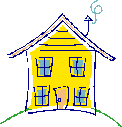 |
| школа |
|
хата (дім) |
________________________________
________________________________
________________________________
________________________________ |
|
________________________________
________________________________
________________________________
________________________________
|
 |
|
 |
| банк |
|
кіно (кінотеатр) |
________________________________
________________________________
________________________________
________________________________ |
|
________________________________
________________________________
________________________________
________________________________
|
 |
|
 |
| бібліотека |
|
ресторан |
________________________________
________________________________
________________________________
________________________________
|
|
________________________________
________________________________
________________________________
________________________________
|
 |
|
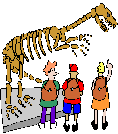 |
| церква |
|
музей |
________________________________
________________________________
________________________________
________________________________
|
|
________________________________
________________________________
________________________________
________________________________ |
 |
|
 |
| крамниця (магазин) |
|
лікарня (шпиталь) |
________________________________
________________________________
________________________________
________________________________
|
|
________________________________
________________________________
________________________________
________________________________ |
 |
|
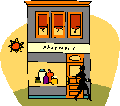 |
| пошта |
|
аптека |
________________________________
________________________________
________________________________
________________________________
|
|
________________________________
________________________________
________________________________
________________________________ |
XV. Exercise 2.iv Practise using the Genitive Case in the following exercise.
1. |
кінотеатр |
Ходімо до __________________________ .
|
2. |
вітальня |
Хто йде до __________________________?
|
3. |
лазничка |
Ми йдемо до __________________________.
|
4. |
банк |
Я йду до __________________________.
|
5. |
музей |
Мама йде до __________________________.
|
6. |
бібліотека |
Діти йдуть до __________________________.
|
7. |
дім |
Дід іде до __________________________.
|
8. |
ресторан |
Степан іде до __________________________.
|
9. |
школа |
Чи ви йдете до __________________________?
|
10. |
крамниця |
Ні, ми йдемо до __________________________.
|
 |
У розмові ми чуємо: |
Я вже одягаюся .
|
 |
|
In Dialogue 15, Petryk is rushing to get dressed for school. What is he wearing? If Petryk lives in Western Canada, he will need warm clothing for cold winter days as well as beach clothing for hot summer days! Study the terms for clothing given below.
XV. Exercise 2.v
In the word search below, find as many clothing items as possible.
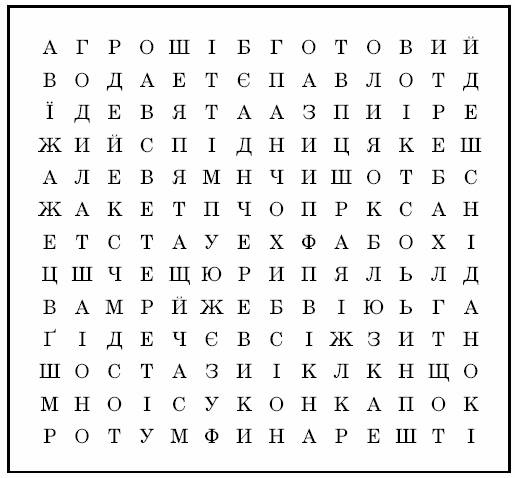
|
Іменники: Знахідний відмінок
|
Examples of the Accusative Case are given below, using articles of clothing as the direct object in each sentence.
Моя кузинка Оля має дуже тепле пальто.
Ви маєте сині чи пурпурові рукавиці?
Тато має синю краватку, білу сорочку й чорний костюм.
Олена любить рожеву суконку і білі панчохи.
Here is a brief review of declensions in the Accusative Case:
Чоловічий рід: inanimate - no change (жакет = жакет)
Жіночий рід: а --- у (блюзка --- блюзку)
я --- ю (спідниця --- спідницю)
Середній рід: no change (пальто = пальто)
XV. Exercise 2.vi
Complete the exercise.
1. Що Петро має? (шапка)
___________________________________________________________
2. Що панна Мороз має? (блюзка)
___________________________________________________________
3. Що має Іван? (пальто)
___________________________________________________________
4. Що пан Баран має? (жакет)
___________________________________________________________
5. Що мають хлопці? (штани)
___________________________________________________________
6. А що ви маєте? (черевики)
___________________________________________________________
7. Що дівчата мають? (панчохи)
___________________________________________________________
8. Що Лариса має? (спідниця)
___________________________________________________________
9. Що ти маєш? (рукавиця)
___________________________________________________________
XV. Exercise 2.vii
Organize the words below into three lists under the given categories.
кінотеатр, блюзка, пасок, шкарпетки, музей, рука, нога, шия, магазин, п’ята, хата, груди, лікарня, жакет, сорочка, банк, голова, штани, коліно, живіт, церква, школа, черевики, лікоть, ресторан, пошта, плече, бібліотека, светр, пупець, крамниця, спідниця, рукавиці, пальці, суконка, шапка
Частини тіла |
Будинки |
Одяг |
| |
|
|
|
|
|
|
|
|
|
|
|
|
|
|
|
|
|
|
|
|
|
|
|
|
|
|
|
|
|
|
|
|
|
|
|
|


